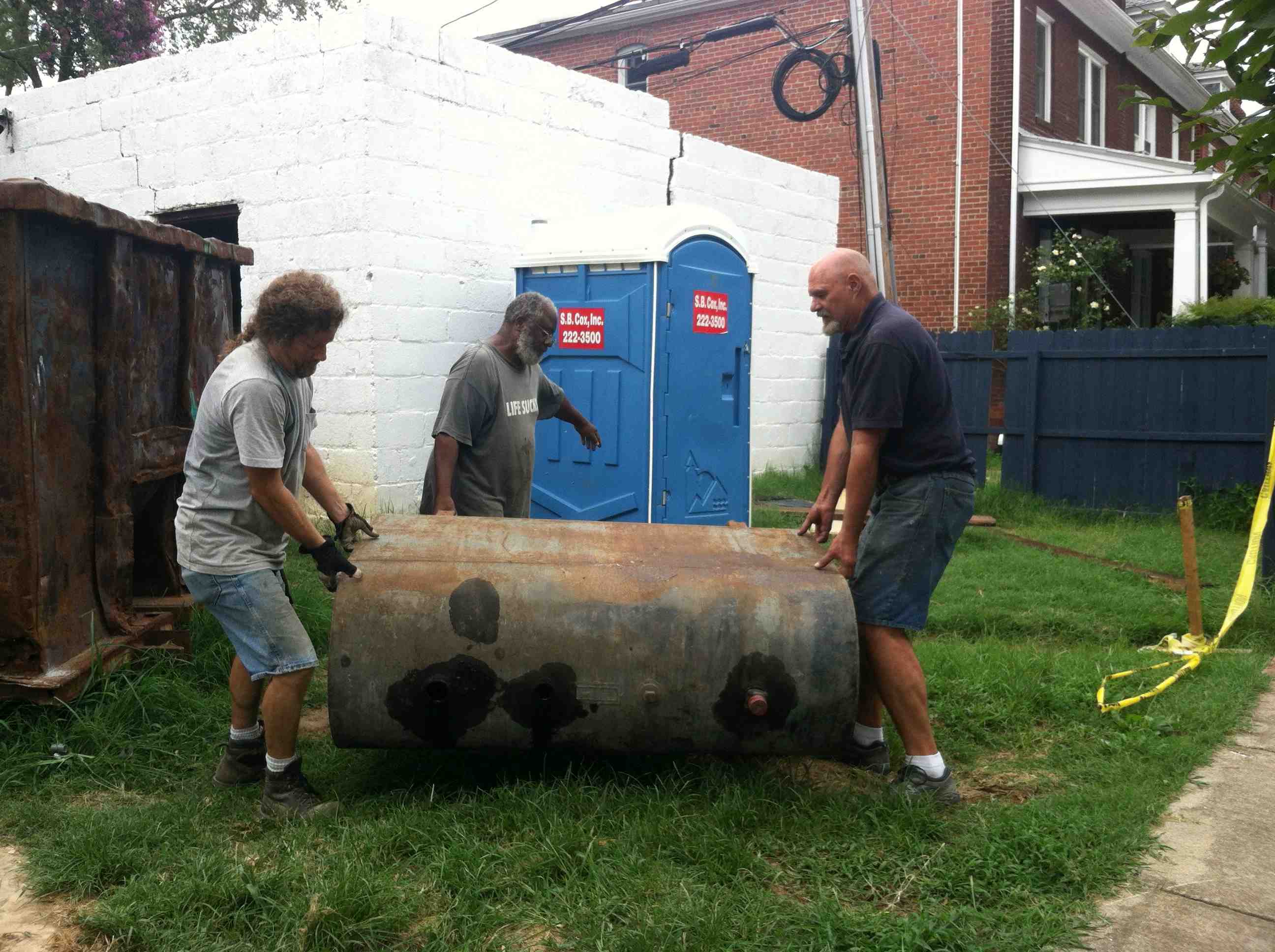Home>Gardening News and Trends>What Is A Backyard Ultra


Gardening News and Trends
What Is A Backyard Ultra
Published: August 5, 2023
Explore the latest gardening trends with What Is A Backyard Ultra. Discover innovative techniques and ideas to transform your backyard into a stunning outdoor oasis.
(Many of the links in this article redirect to a specific reviewed product. Your purchase of these products through affiliate links helps to generate commission for Chicagolandgardening.com, at no extra cost. Learn more)
Table of Contents
Introduction
Welcome to the exciting world of backyard ultras! In recent years, this unique and challenging form of ultra-running has gained popularity among avid runners and outdoor enthusiasts. The backyard ultra is a grueling endurance race that tests participants’ mental and physical strength to the limit. Unlike traditional races with a set distance, the backyard ultra pushes participants to run a loop course repeatedly until they can no longer keep up with the pace.
In a backyard ultra, runners strive to complete a loop, which is typically around 4 to 6 miles long, within a fixed time frame. Once they finish the loop, they must be ready to start the next one when the time is up. The clock keeps ticking, and participants have to maintain the same pace for each loop without any breaks or rest periods.
The concept of backyard ultra races was popularized by Lazarus Lake, the creator of the infamous Barkley Marathons. Inspired by a prisoner-of-war camp escape challenge called the “Biggest Loser Ultra,” Lake introduced the backyard ultra format in 2011. Since then, it has gathered a cult-like following and is now held in various locations around the world.
Backyard ultras are more than just a test of physical endurance. They also demand mental resilience and strategic planning. Runners must carefully manage their energy levels, pacing, and nutrition to ensure they can keep going for hours, or even days, on end. The constant loop format and tight time constraints add a captivating element of strategy and suspense to the race, keeping participants engaged and on their toes.
Participating in a backyard ultra can be a life-changing experience, pushing individuals beyond their limits and showing them what they’re truly capable of. Whether you’re an experienced ultra-runner looking for a new challenge or a beginner seeking to push your boundaries, the backyard ultra offers a unique and thrilling opportunity.
In the following sections, we’ll delve deeper into the intricacies of backyard ultras, explore the strategies employed by participants, highlight notable races and records, and offer tips on training and preparation to help you conquer this extraordinary endurance event.
Definition of a Backyard Ultra
A backyard ultra is an endurance race format that challenges runners to complete a loop course within a certain timeframe repeatedly. Unlike traditional races with a fixed distance, the backyard ultra tests participants’ stamina, mental toughness, and strategic thinking as they strive to keep up with the relentless pace.
The term “backyard” refers to the intimate and low-key nature of these races. They are often held in a small, easily accessible area, such as a park or private property, with a loop course that ranges from 4 to 6 miles in length. The loop is typically a mix of trails, roads, or a combination of both, designed to provide varied terrain and challenges for the participants.
The defining feature of a backyard ultra is the timed format. Runners have a fixed amount of time, usually one hour, to complete each loop. Once they finish the loop within the timeframe, they rest and refuel until the next loop starts. The race continues in this manner, with runners continuously completing one loop after another until they can no longer maintain the pace or choose to withdraw voluntarily. The last runner standing, who completes the last loop alone, is crowned the winner.
The unique aspect of a backyard ultra is the “no finish line” concept. There is no predetermined distance to cover, and the race continues until only one runner remains. Consequently, backyard ultras can last for hours, days, or even longer, depending on the endurance and determination of the participants.
Furthermore, backyard ultras foster a community spirit among participants. Runners often support and motivate each other, sharing the common goal of pushing their limits and pushing past the boundaries of what they thought was possible. The camaraderie and shared experiences make backyard ultras a truly memorable and inspiring event for both participants and spectators.
In the following sections, we will explore the history of backyard ultras, how these races work, the strategies employed by participants, and the mental and physical challenges they face. By understanding the intricacies of backyard ultras, you’ll gain insights into this unique form of endurance racing and appreciate the remarkable achievements of those who take on this remarkable challenge.
History of Backyard Ultras
The history of backyard ultras can be traced back to 2011 when Lazarus Lake, the eccentric creator of the Barkley Marathons, introduced the format to the running community. The inspiration for the backyard ultra came from a challenging race called the “Biggest Loser Ultra” that took place in a prisoner-of-war camp escape challenge.
Lake wanted to create a race that would test runners’ endurance and mental fortitude in a unique and captivating way. He designed the backyard ultra format to challenge the participants’ limits and push them beyond what they thought was possible.
The first official backyard ultra, known as the “Big Dog’s Backyard Ultra,” took place in Bell Buckle, Tennessee. The race gained attention and popularity due to its unconventional concept. Runners were required to complete a 4.1667-mile (6.7-kilometer) loop within an hour and start the next loop on the hour. The race continued in this repetitive pattern until only one runner remained.
Over the years, backyard ultras have gained a dedicated following and have expanded to different locations worldwide. The race format’s simplicity and challenge have captivated the running community, leading to the establishment of various backyard ultras in different countries.
One of the most famous backyard ultras is the “Big’s Backyard Ultra” in Bell Buckle, Tennessee. The race is held annually and attracts top-level ultrarunners from around the world. In this event, the loop distance has remained the same, but the competition has grown more intense, with runners attempting to surpass previous distance records.
In recent years, backyard ultras have taken on a global scale with the establishment of the “World’s Backyard Ultra” championship. This championship brings together the winners of various backyard ultras to compete against each other in a battle of mental and physical endurance.
The history of backyard ultras demonstrates the human spirit’s ability to push boundaries and seek out new challenges. From its humble beginnings in Tennessee to its worldwide expansion, the backyard ultra has become a testament to the indomitable spirit of ultrarunners.
In the next sections, we’ll explore how a backyard ultra works, the strategies employed by participants, and the mental challenges faced during these grueling endurance races.
How a Backyard Ultra Works
A backyard ultra follows a unique format that sets it apart from traditional races. Understanding how a backyard ultra works is essential for both participants and spectators to fully appreciate the challenge and strategy involved.
The race begins with all participants gathering at the starting line of the loop course. The loop is typically designed to be around 4 to 6 miles long, but the exact distance may vary depending on the specific event. The loop can consist of various terrains, such as trails, roads, or a combination of both, to provide a diverse and challenging experience for the runners.
At the sound of the starting signal, the runners embark on their first loop. The goal is to finish the loop within a fixed time frame, usually one hour. Once the loop is completed within the designated hour, runners can rest, eat, and prepare for the next loop. It’s crucial to manage time efficiently during the rest periods to ensure enough rest and recovery without wasting valuable minutes.
As each hour passes, a new loop begins. Participants must start the next loop right on time, even if they finished the previous one early. This aspect of the race adds an element of mental challenge and strategic planning. The continuous loop format puts pressure on runners to maintain an appropriate pace, allocate energy wisely, and optimize rest and recovery.
The race continues in this manner, loop after loop, until only one runner remains. The last runner standing, who is able to complete the final loop alone, is crowned the winner of the backyard ultra.
One of the fascinating aspects of a backyard ultra is that there is no fixed distance to cover. The race can last for hours, days, or even longer, depending on the endurance and determination of the participants. The unpredictability of the race adds to its allure, as runners do not know how many loops they will ultimately need to complete to emerge victorious.
Timing is crucial in a backyard ultra. Keeping track of the loop completion time, rest periods, and overall race duration is essential for both runners and race organizers. The use of electronic timing systems or manual lap counting methods ensures accuracy and fairness in determining the winner and providing real-time updates to participants and spectators.
Participating in a backyard ultra requires not just physical fitness and endurance but also mental strength and strategic thinking. Runners must pace themselves effectively, manage their energy levels, and make smart decisions about when to rest, refuel, and push their limits.
In the upcoming sections, we will explore the strategies employed by participants to excel in backyard ultras, as well as the challenges and mental stimulation that these races present to runners.
Strategies for Completing a Backyard Ultra
Completing a backyard ultra requires careful planning, mental resilience, and strategic decision-making. Participants must develop effective strategies to optimize their performance and increase their chances of lasting until the final loop. Here are some key strategies employed by experienced runners in backyard ultras:
- Pacing: One of the most critical strategies in a backyard ultra is pacing. Runners need to find the sweet spot between pushing the pace and conserving energy. Going out too fast can lead to early exhaustion, while running too conservatively may result in falling behind. Understanding one’s capabilities and managing effort throughout each loop is crucial for maintaining a sustainable pace.
- Rest and Recovery: Managing rest periods efficiently is vital in a backyard ultra. Runners must strike a balance between getting enough rest to recover and avoiding excessive downtime. Utilizing rest periods to eat, hydrate, and attend to any necessary medical needs is essential. Developing a routine for rest and recovery can help runners maintain a consistent schedule and maximize their energy levels.
- Nutrition and Hydration: Proper nutrition and hydration are key to sustaining energy levels throughout a backyard ultra. Runners need to consume a balanced mix of carbohydrates, proteins, and fats to fuel their body. Regular hydration is essential to prevent dehydration, especially in hot and humid conditions. Experimenting with different nutrition and hydration strategies during training is vital to identify what works best for individual needs.
- Mental fortitude: Backyard ultras are not just physically demanding; they also test participants’ mental resilience. Developing a strong mental game is crucial to overcome fatigue, monotony, and doubts that may arise during the race. Techniques such as positive self-talk, visualization, and breaking the race down into smaller goals can help maintain focus and motivation.
- Loop management: Understanding the course layout and terrain can give participants an edge in a backyard ultra. Identifying sections that may require more effort or attention, such as challenging climbs or technical trails, allows runners to mentally prepare and adjust their pace accordingly. Familiarizing oneself with the loop course during training helps build confidence and familiarity on race day.
- Support crew: Having a reliable support crew can make a significant difference in a backyard ultra. They can provide assistance, encouragement, and logistical support during rest periods. Support crew members can help with nutrition, gear changes, and motivation, allowing runners to focus on their performance without worrying about the logistics.
Every participant will have their own unique strategies and approaches based on their experience and strengths. The key is to continuously assess and adjust these strategies throughout the race to adapt to changing conditions and personal needs.
In the next sections, we will explore the mental challenges participants face in backyard ultras and discuss notable races and records set within this demanding endurance event.
Challenges and Mental Stimulation in Backyard Ultras
Backyard ultras present a unique set of challenges to participants, both physically and mentally. The combination of repetitive loops, time constraints, and the absence of a fixed finish line can test the mental fortitude and resilience of even the most seasoned runners. Here, we explore the challenges and mental stimulation that participants face in backyard ultras.
One of the primary challenges in a backyard ultra is the monotony of running the same loop repeatedly. The continuous repetition of the course can be mentally draining, testing the participants’ ability to stay focused and motivated. The ability to stay mentally engaged and find motivation in the midst of this repetition is crucial to keep pushing forward.
The timed format of backyard ultras also adds pressure and mental stimulation. Knowing that you must start the next loop on time, regardless of how you feel, can be mentally demanding. Runners need to develop a strong mental game to overcome doubts and push through fatigue to maintain the pace.
An added mental challenge in backyard ultras is the uncertainty of how long the race will last. Unlike traditional races with a fixed distance, backyard ultras continue until only one participant remains. This uncertainty can be mentally daunting as participants must not only cope with the physical demands but also prepare themselves mentally for the possibility of running for an extended period.
The mental challenges in backyard ultras can be mitigated by strategic planning and maintaining a positive mindset. Breaking the race down into smaller milestones or focusing on completing one loop at a time can help participants stay mentally engaged and motivated.
Furthermore, the camaraderie among participants and the support of fellow runners and support crews can provide invaluable mental stimulation. The shared experience, motivation, and encouragement from others create an uplifting atmosphere, boosting morale and inspiring runners to keep pushing through the challenging moments.
Overcoming the mental obstacles in a backyard ultra can be a transformative experience. Participants often discover inner strength and resilience they never knew they had. They learn to push beyond their perceived limitations and develop mental toughness that extends beyond the race itself.
In the upcoming sections, we will delve into notable backyard ultra races and records, as well as explore the training and preparation required for this unique endurance event.
Notable Backyard Ultra Races and Records
Since the inception of backyard ultras, several notable races and incredible records have been set, showcasing the remarkable feats of endurance and mental strength achieved by participants. Here are some notable backyard ultra races and the records associated with them:
Big’s Backyard Ultra: Held annually in Bell Buckle, Tennessee, Big’s Backyard Ultra is one of the most renowned backyard ultras in the world. The race was started by Lazarus Lake himself and has gained global recognition. The current record for this event is held by Johan Steene, who completed 68 consecutive loops, covering a staggering distance of 283.335 miles (455.71 kilometers). The women’s record is held by Courtney Dauwalter, with an impressive 67 loops, totaling 279.167 miles (449.14 kilometers).
World’s Backyard Ultra Championship: The World’s Backyard Ultra Championship brings together winners from various backyard ultras worldwide to compete in a highly anticipated showdown. This event gathers some of the most elite ultra-runners, pushing the limits of endurance. In the 2019 championship, Tom Landon-Smith became the last runner standing, completing 85 loops, equivalent to a mind-boggling 354.17 miles (569.66 kilometers).
Backyard Ultra France: Backyard Ultra France, held in Samoëns, France, showcases the beauty of the French Alps as participants tackle the challenging loops. In 2019, Guillaume Calmettes set an astounding record of 58 loops, covering a remarkable distance of 240.835 miles (387.69 kilometers).
Backyard Ultra Australia: Backyard Ultra Australia takes place in Nimbin, New South Wales, amidst picturesque landscapes. In 2019, Dave Proctor achieved a remarkable feat by completing 59 loops, covering a distance of 245.83 miles (395.62 kilometers).
These records serve as a testament to the incredible physical and mental endurance exhibited by the participants of backyard ultras. Each year, runners continue to push the boundaries, inspiring others to strive for new heights of achievement.
Notable backyard ultra races and records not only demonstrate the exceptional capabilities of the human body but also create a sense of community and camaraderie among participants. They inspire aspiring runners to test their limits and participate in the unique challenge of backyard ultras.
In the next section, we will explore the training and preparation required to tackle the demands of a backyard ultra successfully.
Training and Preparation for a Backyard Ultra
Preparing for a backyard ultra requires a dedicated training regimen that focuses on building endurance, mental resilience, and strategic planning. Here are some key aspects to consider when training for a backyard ultra:
Build Mileage Gradually: Developing a solid base of running mileage is essential for backyard ultra training. Start by gradually increasing weekly mileage, incorporating both long runs and back-to-back training days. This builds endurance and prepares your body for the continuous loop format of the race.
Practice Time on Feet: Since backyard ultras can last for extended periods, it is important to prepare your body for prolonged running. Incorporate training runs that mimic the anticipated race duration, gradually increasing the duration over time. This helps build mental and physical stamina.
Train on Similar Terrain: Familiarize yourself with the specific terrain of the backyard ultra course during training. If possible, incorporate training runs on similar terrain to understand the challenges it presents. This will help you develop specific strategies and adjust your pace accordingly.
Interval Training and Hill Repeats: To build speed and strength, incorporate interval training and hill repeats into your training program. These workouts help improve your overall running efficiency and prepare you for any elevation changes along the course.
Mental Conditioning: Backyard ultras test mental fortitude as much as physical endurance. Practice mental conditioning techniques such as visualization, positive self-talk, and dealing with moments of self-doubt during training. This will help you stay focused and motivated during the race.
Nutrition and Hydration: Train with a nutrition and hydration plan that aligns with your specific needs. Experiment with different foods and hydration strategies during long training runs to identify what works best for you. Practice fueling and hydration during rest periods to maximize recovery efficiency during the race.
Simulate Race Conditions: In the weeks leading up to the backyard ultra, simulate race conditions during training. Practice starting each loop on time, rest and recovery routines, and running at the desired race pace. This helps familiarize yourself with the logistics and mental aspects of the race.
Recovery and Rest: Allow for sufficient recovery and rest days throughout your training to prevent overtraining and reduce the risk of injuries. Adequate sleep, proper nutrition, and active recovery techniques such as foam rolling or stretching are essential for optimal performance.
Support Crew Preparation: If you plan to have a support crew for the race, communicate with them and ensure they understand their roles and responsibilities. Train together during long runs to develop a system that works efficiently for the race.
Remember, every individual is different, and training must be tailored to your specific needs and capabilities. Gradually increase training intensity and volume to avoid overexertion and potential injuries. Seek advice from experienced ultra-runners or consider working with a coach to help develop a personalized training plan.
By following a well-rounded training program and adequately preparing both physically and mentally, you will increase your chances of successfully completing a backyard ultra and achieving your personal goals.
Conclusion
Backyard ultras offer a thrilling and unique challenge for runners seeking to push their limits. The format, with its continuous loop circuits and timed intervals, tests both physical endurance and mental resilience. Through careful pacing, strategic planning, and mental fortitude, participants strive to outlast their competitors and be the last runner standing.
From its humble beginnings with the “Big Dog’s Backyard Ultra” to the establishment of renowned races like Big’s Backyard Ultra and the World’s Backyard Ultra Championship, the popularity of backyard ultras continues to grow. Runners from around the world are drawn to the camaraderie, mental stimulation, and the opportunity to transcend their perceived limitations.
Training and preparation for a backyard ultra require a well-rounded approach. Gradual mileage buildup, time on feet, mental conditioning, and proper nutrition and hydration are all key elements of an effective training plan. Additionally, understanding the course terrain and developing strategies specific to the race can greatly contribute to success.
Notable races and records set in backyard ultras demonstrate the incredible feats of endurance achieved by participants. Runners like Johan Steene, Courtney Dauwalter, and Tom Landon-Smith have pushed the boundaries of human potential, inspiring others to aim higher and embrace the challenges of these endurance events.
Ultimately, a backyard ultra is not just a physical race, but an opportunity to discover inner strength, resilience, and personal growth. Participants learn to overcome mental hurdles, embrace monotony, and persevere through moments of doubt. The support of fellow runners and the sense of community contribute to the transformative experience of a backyard ultra.
Whether you’re a seasoned ultra-runner looking for a new challenge or a passionate runner seeking a unique endurance event, a backyard ultra offers an extraordinary opportunity. Embrace the training, prepare both physically and mentally, and embark on a journey that will push you to your limits and redefine your understanding of what you can achieve.
So lace up your shoes, train hard, and embrace the incredible journey that awaits you in a backyard ultra. It’s a race like no other, where endurance, determination, and the indomitable human spirit truly shine.








